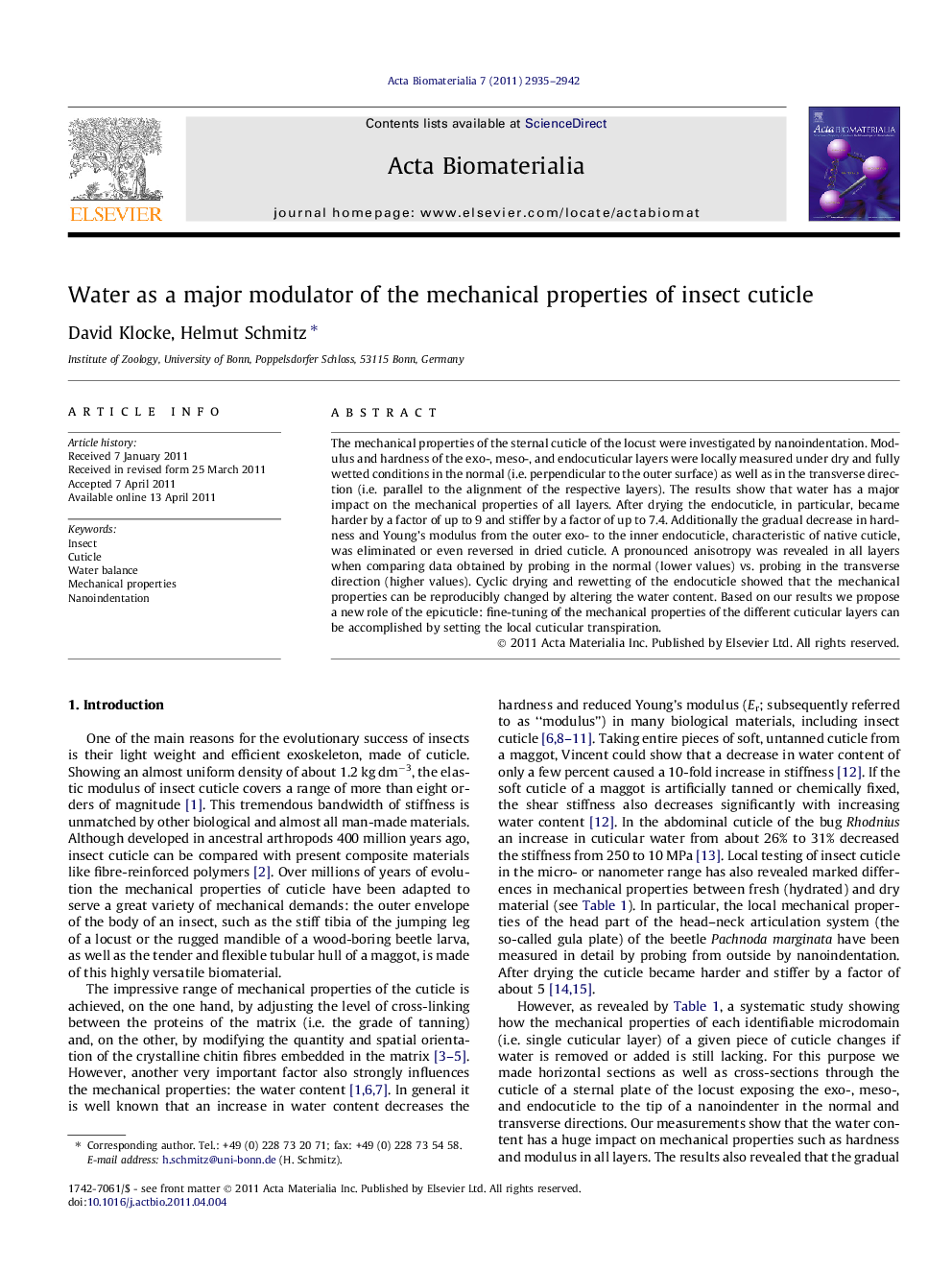| Article ID | Journal | Published Year | Pages | File Type |
|---|---|---|---|---|
| 1159 | Acta Biomaterialia | 2011 | 8 Pages |
The mechanical properties of the sternal cuticle of the locust were investigated by nanoindentation. Modulus and hardness of the exo-, meso-, and endocuticular layers were locally measured under dry and fully wetted conditions in the normal (i.e. perpendicular to the outer surface) as well as in the transverse direction (i.e. parallel to the alignment of the respective layers). The results show that water has a major impact on the mechanical properties of all layers. After drying the endocuticle, in particular, became harder by a factor of up to 9 and stiffer by a factor of up to 7.4. Additionally the gradual decrease in hardness and Young’s modulus from the outer exo- to the inner endocuticle, characteristic of native cuticle, was eliminated or even reversed in dried cuticle. A pronounced anisotropy was revealed in all layers when comparing data obtained by probing in the normal (lower values) vs. probing in the transverse direction (higher values). Cyclic drying and rewetting of the endocuticle showed that the mechanical properties can be reproducibly changed by altering the water content. Based on our results we propose a new role of the epicuticle: fine-tuning of the mechanical properties of the different cuticular layers can be accomplished by setting the local cuticular transpiration.
